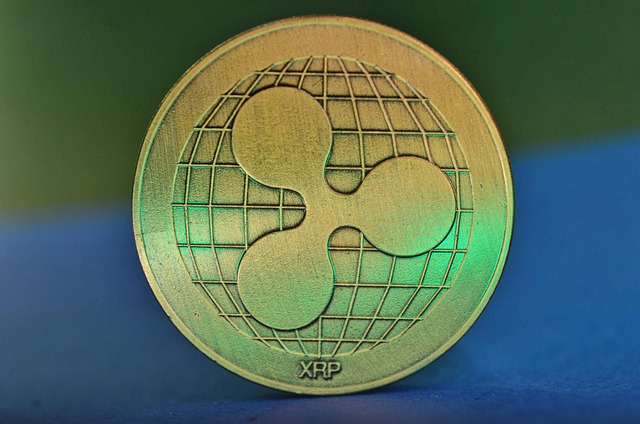Traders pour into leveraged ETFs, gold in bid to weather volatility — Bloomberg
Traders are embracing diametrically opposed exchange-traded fund (ETF) strategies in a bid to navigate one of the most unpredictable financial markets in recent history, according to data from Bloomberg Intelligence. The year-to-date has seen record inflows to ETFs providing leveraged long exposure to volatile assets such as stocks and cryptocurrencies, as well as funds holding risk-off assets such as cash and gold, the data shows. “[T]here’s basically record flows going into leveraged long ETFs but also cash and gold ETFs as people buy the dip and hedge the dip at the same time. May the best degen win!,” Bloomberg Intelligence analyst Eric Balchunas said in an April 23 post on the X platform.Leveraged ETFs are funds that aim to multiply the daily performance of assets like stocks or crypto, often by two or three times.In 2025, leveraged long ETFs attracted net inflows of roughly $6 billion, according to Bloomberg Intelligence. Meanwhile, inflows into cash and gold funds approached roughly $4 billion. Net inflows into leveraged long ETFs and cash and fold ETFs. Source: Bloomberg IntelligenceDigital gold?The record fund flows come amid a spike in market turbulence after US President Donald Trump announced plans for sweeping tariffs on US imports on April 2.Since then, the S&P 500, an index of large US stocks, has shed roughly 5% of its value, according to data from Google Finance. Bitcoin (BTC), meanwhile, has been comparatively resilient. On April 22, the cryptocurrency’s spot price reclaimed $90,000 per coin for the first time in six weeks, with Bitcoin ETFs clocking nearly $1 billion in net inflows. The cryptocurrency trades above $93,000 as of April 23, according to data from Google Finance. “Even in the wake of recent tariff announcements, BTC has shown some signs of resilience, holding steady or rebounding on days when traditional risk assets faltered,” Binance, the world’s largest cryptocurrency exchange, said in an April research report. Bitcoin has often been referred to as “digital gold” but the cryptocurrency still has a weak correlation to the safe haven asset and trades more in line with equities, Binance said. Its correlation with gold has averaged around 0.12 over the past 90 days, versus 0.32 for equities. “The key question is whether BTC can return to its long-term pattern of low correlation with equities,” noted the report, adding that gold is still a preferred safe-haven asset for most investors.Meanwhile, cryptocurrency exchanges are profiting off of rising volatility by doubling down on financial derivatives, such as futures. In April, net open interest in Bitcoin futures increased by upward of 30%, to approximately $28 billion, according to data from Coinalyze. Magazine: What are native rollups? Full guide to Ethereum’s latest innovation
US President’s planned dinner for TRUMP memecoin holders triggers 52% price surge — Will it last?
Official Trump (TRUMP) jumped 52% on April 23 after the announcement of an exclusive in-person dinner for the top tokenholders with US President Donald Trump. For some crypto advocates, this marks the end of the bear market, especially as Bitcoin (BTC) bounced back above $93,000, but others raise suspicions on how sustainable the TRUMP memecoin rally really is.From a purely performance perspective, the Official Trump (TRUMP) memecoin has been a disappointment. After soaring above $75 on launch day, its gains quickly disappeared as investors noticed the high concentration of tokens and the short-term vesting period. At first sight, it is difficult to justify TRUMP’s current market capitalization of $2.6 billion, given that 80% of the supply was allocated to founders and entities controlled by Trump.Official Trump (TRUMP) market capitalization, USD. Source: CoinMarketCapFor comparison, well-established projects such as Arbitrum (ARB), Jupiter (JUP), and Maker (MKR) hold a capitalization below $1.6 billion. Those token valuations derive from buybacks using treasury reserves or direct benefits in staking and DeFi mechanisms. For instance, Arbitrum, a leading Ethereum layer-2 scaling solution, holds $2.4 billion in Total Value Locked (TVL). Jupiter, the leading decentralized exchange (DEX) on Solana, boasts $2.3 billion in deposits and has accrued $76.6 million in fees over the past 30 days, according to DefiLlama data. Meanwhile, Sky (formerly Maker), the project behind the extremely successful DAI stablecoin, holds $5.9 billion TVL and $28.6 million in 30-day fees.TRUMP still ranks in the top 10 for trading activityBesides being listed on major exchanges, including Binance, Bybit, OKX, Coinbase, Upbit, and Kraken, and often promoted on social media by Trump, the memecoin holds an impressive share in derivatives markets. Notably, its futures open interest stands at $700 million, a top-10 overall.TRUMP futures aggregate open interest, USD. Source: CoinGlassEstablished projects with market capitalizations over $6 billion, such as Chainlink (LINK), Litecoin (LTC), and Polkadot (DOT) have smaller futures open interest than TRUMP. Still, while demand for futures markets allows larger traders to take part in the action, it does not necessarily imply optimism as longs (buyers) and shorts (sellers) are matched at all times.Even though TRUMP is currently trading 84% below its all-time high, it remains a top-10 token in terms of volume. In fact, excluding the stablecoins, only 4 cryptocurrencies surpassed TRUMP’s impressive $3.84 billion 24-hour turnover, according to CoinGecko data.24-hour USD trading volume ranking. Source: CoinGlass / CointelegraphDespite the huge trading activity, a single promotional event with US President Trump is unlikely to create lasting demand for the TRUMP memecoin, putting the current $13.50 price tag in check. Unless the project eases investors’ concerns about token unlocks, there is hardly a way to justify the 50% premium versus cryptocurrencies that offer utility and perspectives of growth.It is worth noting that Shiba Inu (SHIB), another memecoin with no real utility, presently trades at a $8 billion market capitalization, hence one could easily argue that a token officially supported by the sitting US President is worth far more, paving the way for $30 or higher price targets for TRUMP.This article is for general information purposes and is not intended to be and should not be taken as legal or investment advice. The views, thoughts, and opinions expressed here are the author’s alone and do not necessarily reflect or represent the views and opinions of Cointelegraph.
Sovereign wealth funds piling into BTC as retail exits — Coinbase exec
Sovereign wealth funds and other institutions were accumulating Bitcoin (BTC) during April 2025, while retail traders were exiting the markets via exchange-traded funds (ETFs) and spot markets, according to John D’Agostino, the head of strategy at Coinbase Institutional.During a recent appearance on CNBC, the Coinbase executive likened Bitcoin to gold and said that many institutional buyers bought BTC as a hedge against currency inflation and macroeconomic uncertainty. The Coinbase executive said:”Bitcoin is trading on its core characteristics, which again are similar to gold. You’ve got scarcity, immutability, and non-sovereign asset portability. So it’s trading the way people who believe in Bitcoin would like it to trade.””When you do the work, there’s a very short list of assets that mirror the characteristics of gold. Bitcoin is on that shortlist,” the executive added.Governments and financial institutions are increasingly adopting Bitcoin to protect purchasing power and the value of their treasuries in the face of macroeconomic shocks and geopolitical tensions.Bitcoin recently broke back above the $90,000 level and has reclaimed its ‘decoupling’ narrative. Source: CoinMarketCapRelated: Bitcoin holders back in profit as new capital enters the market — Is $100K BTC price next?Institutions adopting Bitcoin reserve strategies to combat inflationSovereign countries like El Salvador and Bhutan have adopted national Bitcoin reserves and actively purchase Bitcoin for their reserves.Municipalities and state governments have also adopted pro-Bitcoin policies and proposed legislation to accumulate Bitcoin to protect the purchasing power of treasuries from depreciating fiat currencies.Michael Saylor and Strategy, formerly known as MicroStrategy, popularized the corporate Bitcoin treasury concept now adopted by a growing list of companies, including MARA, MetaPlanet, and Semler Scientific.The executive also transformed the business software and intelligence company into a Bitcoin holding firm, akin to a BTC hedge fund.On April 20, Saylor announced that over 13,000 institutions have direct exposure to Strategy, while an estimated 55 million beneficiaries have indirect financial exposure to the company.Bitcoin recently surpassed Google in market capitalization, making Bitcoin one of the top five assets in the world, ranking above Amazon and Silver and showcasing the supply-capped digital asset’s meteoric growth since 2009.Magazine: Bitcoiner sex trap extortion? BTS firm’s blockchain disaster: Asia Express
SOL Strategies raises $500M in convertible notes issuance to buy Solana tokens
SOL Strategies, a Canadian investment company, issued $500 million in convertible notes to buy and stake in Solana (SOL) tokens.The $500 million issuance was made to a singular investor, ATW Partners, a New York-based investment firm. The company provides growth equity and structured capital to companies across public and private markets, a spokesperson for SOL Strategies told Cointelegraph.A spokesperson for SOL Strategies said the company is focused on building institutional-grade infrastructure for Solana, rather than reacting to short-term price volatility.According to an April 23 announcement, the yield generated from staking will accrue back to both SOL Strategies and ATW Partners. SOL Strategies is a publicly traded company listed on the Canadian Securities Exchange. Its share price has risen 25.3% on the day, according to Google Finance.Related: Astra Fintech commits $100M for Solana growth in AsiaSOL Strategies’ share price movement. Source: Google Finance“This investment represents significant institutional confidence in Solana’s long-term potential,” the spokesperson said. “From an ecosystem perspective, we expect several positive impacts. First, by increasing our validator network’s stake, we’ll contribute to greater network security and decentralization.”According to StockAnalysis.com, SOL Strategies posted CAD$10.62 million ($7.65 million) in revenue for 2024, a positive turnaround of CAD$15.65 million ($11.27 million) from 2023, when the company posted a loss.Related: Debate as Solana briefly flips Ethereum in staking market capCompanies move into SolanaSOL Strategies becomes the second publicly traded company to announce a capital raise aimed at purchasing SOL. On April 21, Upexi disclosed a $100 million raise aimed at building a SOL reserve. The DeFi Development Corporation (formerly Janover) also recently announced a $42 million raise and plans to create a Solana reserve treasury. Magazine: Memecoins are ded — But Solana ‘100x better’ despite revenue plunge
Alabama drops staking lawsuit against Coinbase
The Alabama Securities Commission, a financial regulator for the US state, dropped its lawsuit against crypto exchange Coinbase, which accused the company of violating securities laws by offering staking services to clients.The regulator cited the ongoing work between the US Securities and Exchange Commission (SEC) and the crypto industry to develop clear crypto regulations as the primary reason for dropping the litigation, according to the April 23 legal filing shared by Coinbase’s chief legal officer, Paul Grewal.The filing read:”The SEC has announced the formation of a new task force to, among other things, provide guidance for the promulgation of rules regarding the regulation of cryptocurrency products and services.””Due to the foregoing, the Commission believes it would be apt to allow policymakers time to consider regulatory constructs,” the filing continued.The Alabama Securities Commission filed its lawsuit against Coinbase in June 2023, alongside state regulators from California, Illinois, Kentucky, Maryland, New Jersey, South Carolina, Vermont, Washington, and Wisconsin.The Alabama Securities Commission dismisses its 2023 lawsuit against Coinbase. Source: Paul GrewalThe Commission’s dropped lawsuit reflects the positive regulatory shift toward cryptocurrencies in the United States as reform at the federal level matriculates into state-level regulatory policy.Related: Oregon targets Coinbase after SEC drops its federal lawsuitUS states drop Coinbase lawsuit but half still holding outFive of the 10 states that filed the litigation against Coinbase for its staking services have dropped their lawsuits.On March 13, Vermont’s Department of Financial Regulation became the first of the 10 state regulators to drop the staking lawsuit against Coinbase.South Carolina’s securities watchdog was the next to drop the 2023 litigation against Coinbase, dismissing the lawsuit on March 28.Grewal announced that Kentucky’s Department of Financial Institutions followed Vermont and South Carolina’s lead on April 1 by also dismissing its Coinbase lawsuit.Despite the domino effect of states rescinding litigation against the crypto exchange, the Coinbase chief legal officer said that more work needs to be done.”Five holdouts are still electing to waste taxpayer resources on lawsuits, and four of those have banned staking with Coinbase, depriving consumers of the right to earn on their platform of choice,” Grewal wrote in an April 23 X post.Magazine: SEC’s U-turn on crypto leaves key questions unanswered
XRP futures open interest surges by 32% — Are traders bullish or bearish?
Key Takeaways: XRP has gained 25% since April 7, and its open interest has risen by 32%.Positive spot market activity contrasts with a neutral futures funding rate, highlighting a tug-of-war between traders.Analysts still have double-digit price targets for XRP.XRP’s (XRP) price fell to a year-to-date low of $1.61 on April 7, but has gained 25% over the past two weeks as the broader crypto market recovered and XRP open interest surged. XRP futures open interest. Source: CoinGlassThe altcoin’s open interest surged 32% from $3.14 billion to $4.13 billion between April 21 and 23, signaling the return of derivatives traders. Futures OI increasing alongside the price indicates a bullish sentiment, but data from the Velo painted a different picture. Based on the negative aggregated premium on open interest, the XRP futures market continued to bid against an XRP price rise. The funding rate remained near 0, implying a neutral stance between the bulls and bears. XRP aggregated premium, spot tape and open interest chart. Source: VeloThe aggregated spot tape cumulative volume delta became positive in April. This indicator measures the net difference between aggressive buy and sell trades across various exchanges. When it turns green and rises above zero, it indicates increasing buying pressure, with market buy trades surpassing sell trades.Despite rising futures interest, the data suggests XRP’s price remains caught in a tug-of-war between bullish spot market activity and bearish perpetual futures.Related: Price predictions 4/23: BTC, ETH, XRP, BNB, SOL, DOGE, ADA, LINK, AVAX, SUIIs XRP destined for double-digits?Following XRP’s price pump, Sistine Research, a crypto investment community, posted a bold prediction for XRP, forecasting a long-term target between $33 and $50. The prediction is based on a higher time frame (HTF) symmetrical triangle that mirrors 2017’s 2,600% rally. The platform suggested that an optimistic target may drive prices as high as $77-$100.XRP price target by Sistine Research. Source: X.comFor context, XRP is currently valued at $2.23 with a market cap of $131 billion. A $33 target increases the market cap to ~$2 trillion (1,400 %+), which is more than Bitcoin’s current market cap. From a lower-time frame (LTF) perspective, XRP shows an inverse head-and-shoulders pattern, which could potentially test the resistance range between $2.50 and $2.67. The resistance range also coincides with the Fibonacci extension levels drawn from the neckline’s base to the head’s lowest point. Although the relative strength index (RSI) is nearing overbought territory, suggesting a potential pause in price movement at the current range.XRP 4-hour chart. Source: Cointelegraph/TradingViewRelated: XRP Ledger Foundation spots ‘crypto stealing backdoor’ in code libraryThis article does not contain investment advice or recommendations. Every investment and trading move involves risk, and readers should conduct their own research when making a decision.
US exchanges bet big on crypto derivatives amid tariff turbulence
United States exchanges are betting big on cryptocurrency derivatives as market turbulence from US President Donald Trump’s looming trade war propels demand for the financial instruments. Since late 2024, exchanges including Coinbase, Robinhood, Kraken, and the Chicago Mercantile Exchange (CME) Group have been listing new types of crypto derivatives and mulling multibillion-dollar acquisitions as they vie for control of the burgeoning market. In April, the stakes became even higher after Trump’s unveiling of sweeping tariff plans sent financial markets into a frenzy and spiked crypto derivatives trading volumes. “Institutional and sophisticated retail traders are increasingly turning to crypto derivatives platforms to navigate macroeconomic risks and uncertainty brought on by escalated tariff policies and global trade tensions,” David Siemer, CEO of asset manager Wave Digital Assets, told Cointelegraph. Consequently, US exchanges are “experiencing record-breaking surges in trading activity and are expanding their investment offerings with the promise of regulatory clarity,” Siemer said. Net open interest in Bitcoin futures rose sharply in April. Source: CoinalyzeRelated: Coinbase launches CFTC-regulated SOL futures in USTrump spikes trading activityCrypto derivatives trading activity took off in 2024 after Trump’s November election victory sent exchange volumes to record highs. In December, Coinbase said trading activity on its derivatives exchange rose by more than 10,000% year-over-year. Similarly, CME Group flagged crypto derivatives as among the exchange’s fastest-growing product segments during its 2024 earnings call. Trump’s tariff plans, announced April 2, further accelerated trading activity. As of April 23, net open interest in Bitcoin (BTC) futures, the most popular crypto derivatives, rose by approximately 30% from the start of the month, according to data from Coinalyze. Futures contracts are standardized agreements to buy or sell an underlying asset at a future date, often using leverage in a bid to enhance returns. Kraken bought NinjaTrader in March. Source: KrakenHeated competitionBurgeoning trading volumes are fueling competition among exchanges. Since February, Coinbase has launched several new crypto derivatives products, including futures contracts tied to altcoins such as Solana (SOL) and XRP (XRP).Meanwhile, Robinhood listed Bitcoin futures — its first crypto derivatives contracts — in February and, in March, CME Group listed its first Solana futures contracts. The CME SOL futures clocked upward of $12 billion in volume during the first day of trading, the exchange told Cointelegraph. Additionally, exchanges are turning to mergers and acquisitions to hasten growth. Coinbase is reportedly in talks to buy crypto derivatives exchange Deribit in a multibillion-dollar bid to expand its footprint in the market segment. In March, US crypto exchange Kraken agreed to buy NinjaTrader, a futures exchange, for $1.5 billion.“The recent wave of tariffs has transformed crypto derivatives exchanges into critical market infrastructure,” Nic Roberts-Huntley, CEO of Web3 developer Blueprint Finance, told Cointelegraph. “While traditional markets faltered under tariff pressures, derivatives platforms have inversely flourished, serving both as speculative venues and protective hedging mechanisms in a fragmenting global trade landscape,” Roberts-Huntley said.Magazine: Trump’s crypto ventures raise conflict of interest, insider trading questions
Luxury app Dorsia taps MoonPay for crypto payments
Luxury hospitality platform Dorsia is rolling out crypto payments for clients in the United States, the United Kingdom, Europe, and six Arab nations.The payments feature is being enabled through a partnership with MoonPay, the companies told Cointelegraph. With the integration, users will be able to book luxury travel experiences and complete transactions directly in USDC (USDC) and Solana-based tokens through the Dorsia app.“[…] integrating crypto payments is a natural next step in aligning with the evolving preferences of our members,” Marc Lotenberg, founder and CEO of Dorsia, said in an interview.Dorsia is the latest luxury firm to turn to crypto services for high-net-worth individuals. The industry has been highly active in the Web3 space over the past few years, exploring crypto on-ramps and customer engagement features, such as non-fungible tokens and metaverses.Luxury carmakers Lamborghini and Ferrari, and watchmakers like Patek Philippe, are a few companies accepting payments in cryptocurrencies.Dorsia is a luxury hospitality app that connects its members with high-end restaurants and cultural experiences. Instead of traditional booking models, Dorsia uses dynamic pricing and a membership-based system for reservations at luxury facilities. According to Grand View Research, the luxury travel market is expected to reach $2.3 trillion by 2030.Related: Gucci the latest luxury brand to accept crypto payments in storeThe company has raised a total of $50.4 million in funding across Seed and Series A rounds. Major backers include Index Ventures, RedSea, and individuals from Meta, Uber, Atomic, Groot Hospitality, and the Rockwell Group.Related: Polygon-based lending platform to provide crypto liquidity for luxury itemsMoonPay expands in 2024Dorsia isn’t the first luxury brand to partner with MoonPay. According to the company’s CEO, Ivan Soto-Wright, it also offers a crypto on-ramp for clients like fashion house Gucci, carmaker Bugatti, and auction house Christie’s.MoonPay’s net revenue increased 112% in 2024, while transaction volume in Q1 2025 soared 123%, according to the company.In January, MoonPay acquired the Solana-based payment processor Helio in a $175 million deal. The acquisition enabled a broader range of partnerships for payments, including with Dorsia, the company revealed. MoonPay has also recently acquired Iron to facilitate payments in stablecoins for merchants.Magazine: AI Eye: AI travel booking hilariously bad, 3 weird uses for ChatGPT, crypto plugins








